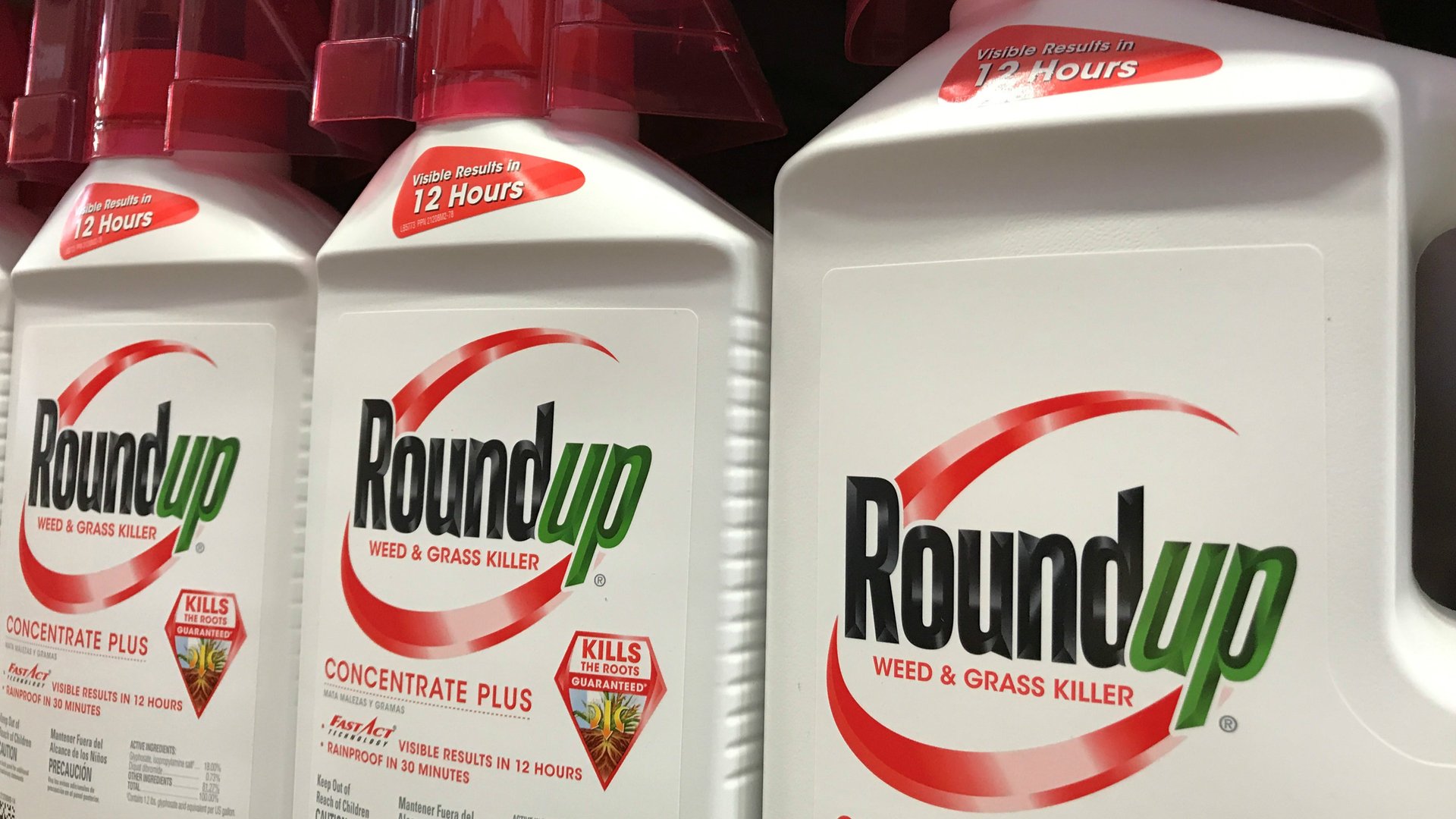Trump’s EPA has to decide whether it thinks Monsanto’s top weed killer causes cancer
Spraying chemicals on crops to provide protection from weeds and pests has become an essential tool for American farmers growing the world’s food. In the last several years, that practice has hit snags, as concern over whether an active ingredient in those chemicals—glyphosate—can be tied to cancer in humans.


Spraying chemicals on crops to provide protection from weeds and pests has become an essential tool for American farmers growing the world’s food. In the last several years, that practice has hit snags, as concern over whether an active ingredient in those chemicals—glyphosate—can be tied to cancer in humans.
The outcome of the debate could jolt farmers, who rely on weed killers in the production of their biggest crops. Today more than 80% of soybeans, corn, and cotton are grown by US farmers who use such chemicals—a major change from just two decades ago.
The US Environmental Protection Agency (EPA) is required by law to review pesticides at least once every 15 years for safety, and the time to review glyphosate is upon us. Since 1991, the EPA has deemed the chemical safe. Future approval appears in jeopardy, as a panel of scientists appointed last year by the government may not be in favor of widespread use. In a panel report released in March, there were many references to “some panel members” expressing doubt about some of the methods and conclusions of the EPA’s standing position on glyphosate.
The decision ultimately will fall to the agency, which is led by Scott Pruitt, who repeatedly sued the EPA in efforts to blunt environmental regulations when he was Oklahoma’s attorney general and has ousted several scientists from the agency since US president Donald Trump put him in charge of it. As Bloomberg points out in a big new feature, the chances Pruitt will block glyphosate are slim.
It will be difficult to ween farmers in charge of delivering good yields from an array of crops off glyphosate. Since the Industrial Revolution, farmers have incorporated innovations such as the cotton gin, grain elevators, and tractors. In the 1960s, new crop varieties and chemicals hit the market—allowing farmers to be more efficient, and produce more food with less space.
For its part, Monsanto claims that worries about glyphosate are misplaced, that the chemical is less toxic than coffee and has been scrutinized for years.
“Glyphosate has a long history of safe use,” the company said in a statement. “In evaluations spanning four decades, the overwhelming conclusion of experts worldwide has been that glyphosate, when used according to label directions, does not present an unreasonable risk of adverse effects to humans, wildlife or the environment.”
Some researchers claim there are alternative practices that can maintain production and costs without using glyphosate. These methods require fastidious attention to crop rotation. One thing is for sure: If US farmers are forced to find other means for protecting their crops from pests and weeds, they’ll need to think quick. The world’s population is only expected to balloon—even as droughts wrought by a changing climate are expected to make farming even harder.